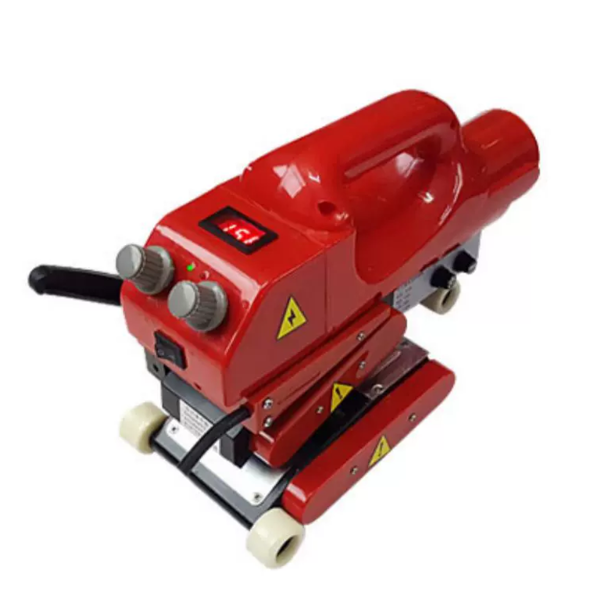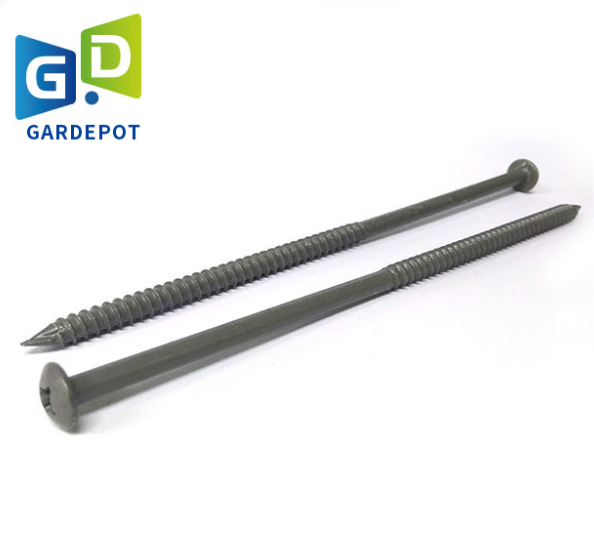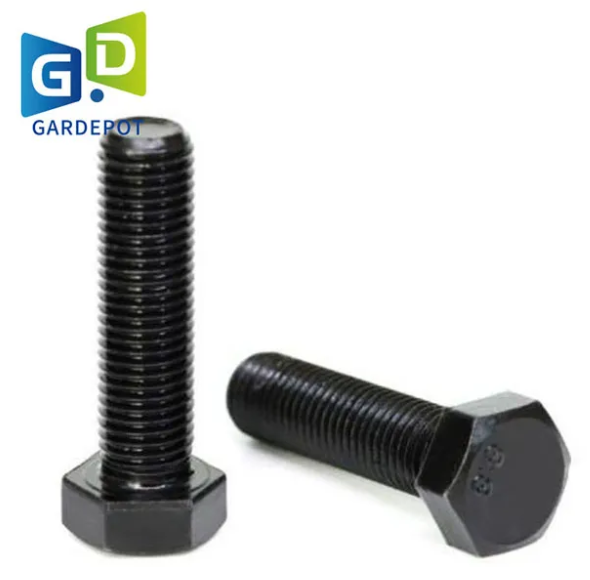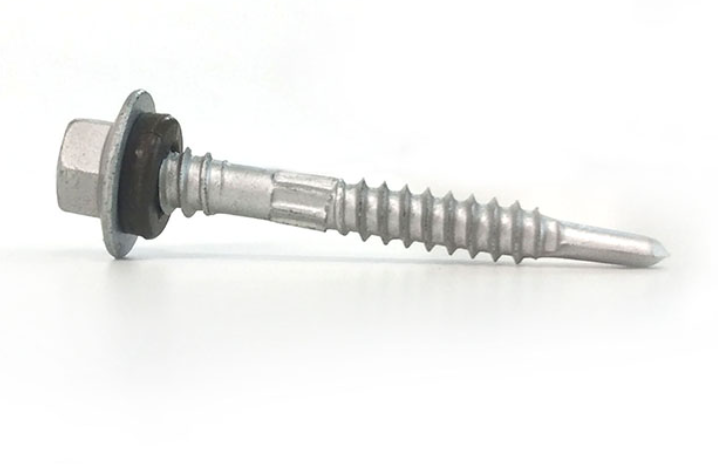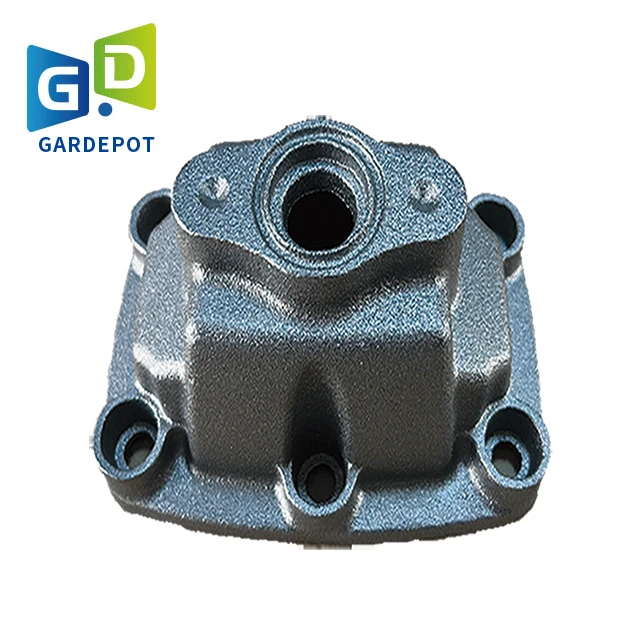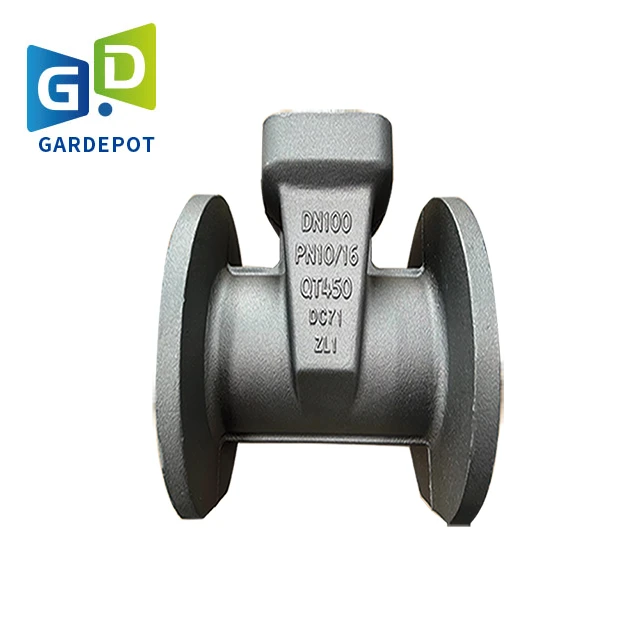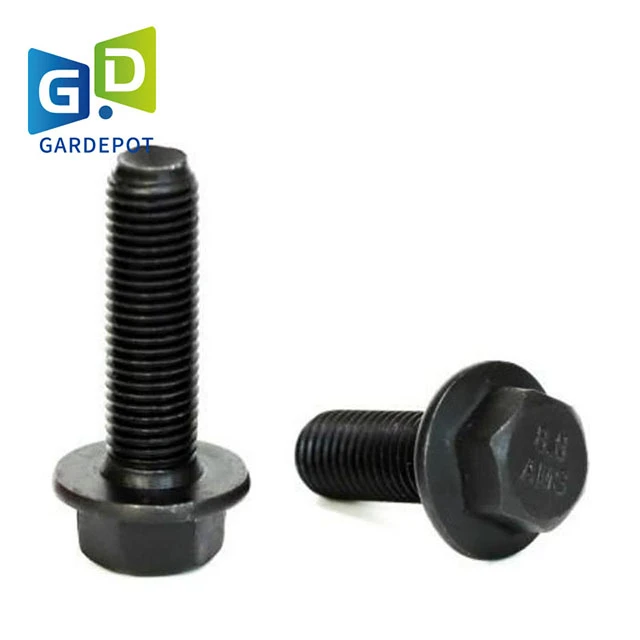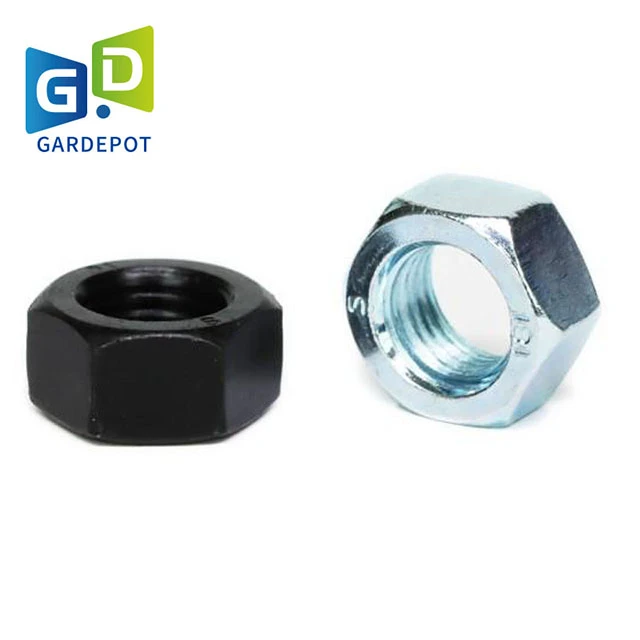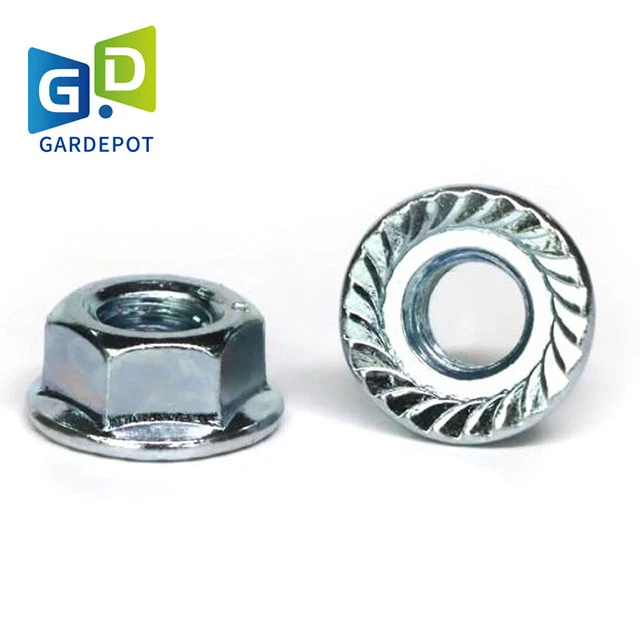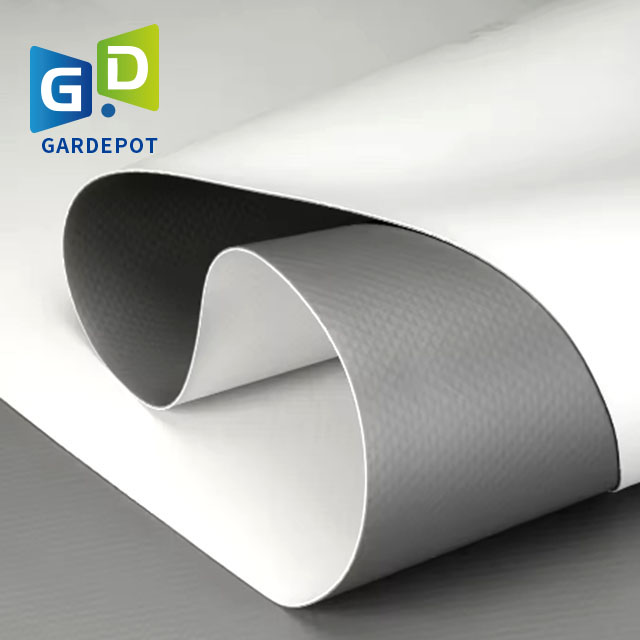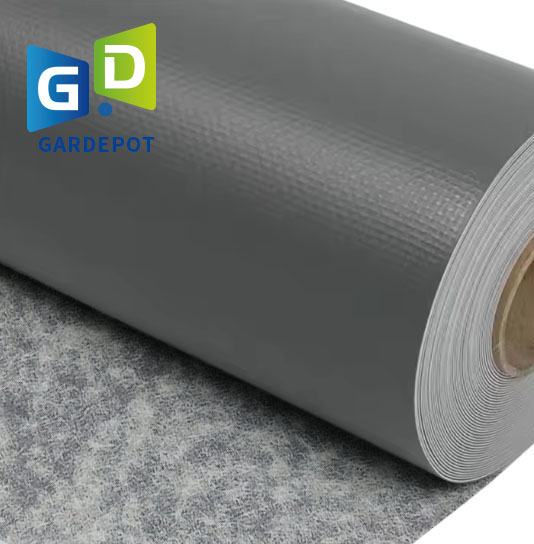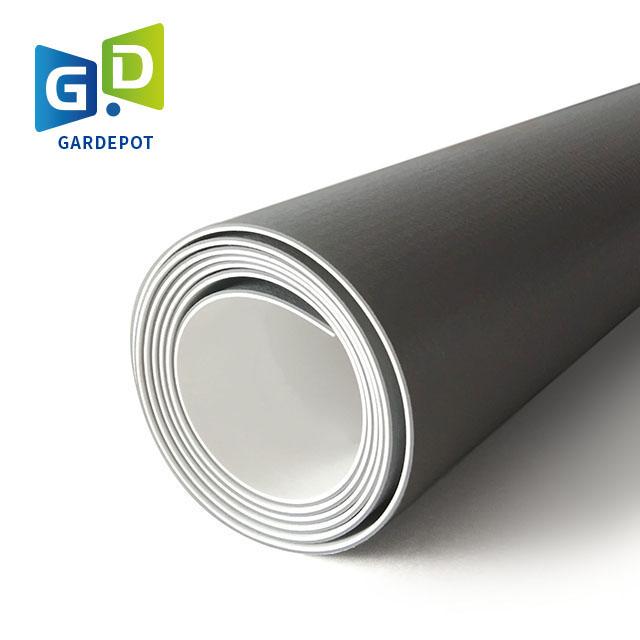Rubber Roofing Membrane Cost: Durable EPDM & TPO Solutions
Understanding the Landscape of Roofing Membranes: Beyond the cost of rubber roofing membrane
The roofing industry is constantly evolving, with a strong emphasis on durability, energy efficiency, and long-term cost-effectiveness. While "rubber roofing" often refers to EPDM (Ethylene Propylene Diene Monomer) membranes, a broader range of high-performance materials like PVC and TPO are gaining significant traction due to their unique properties and competitive advantages. Evaluating the true cost of rubber roofing membrane involves not just the initial purchase price, but also installation complexity, lifespan, maintenance requirements, and overall energy savings. This comprehensive guide delves into these aspects, presenting our cutting-edge PVC Membrane solutions as a prime example of modern roofing technology.
Industry Trends and Material Innovations
The global demand for sustainable and resilient building materials continues to shape the roofing market. Architects, contractors, and building owners are increasingly seeking solutions that offer superior waterproofing, resistance to extreme weather, and reduced environmental impact. This has led to the proliferation of advanced single-ply membranes, which offer a lightweight, flexible, and robust alternative to traditional multi-ply systems.
- Sustainability Focus: Emphasis on recyclable materials and reduced energy consumption during manufacturing and throughout the building's lifecycle.
- Performance Demands: Growing need for materials that withstand UV radiation, chemical exposure, punctures, and temperature fluctuations without degradation.
- Installation Efficiency: Demand for products that can be installed quickly and reliably, minimizing labor costs and project timelines.
- Digital Integration: Adoption of technologies like BIM (Building Information Modeling) and drone-based inspections for better project management and quality control.
While the cost of rubber roofing membrane remains a benchmark, the market is shifting towards materials like PVC and TPO due to their enhanced weldability, chemical resistance, and often, lighter weight, which can significantly impact installation costs and structural requirements.
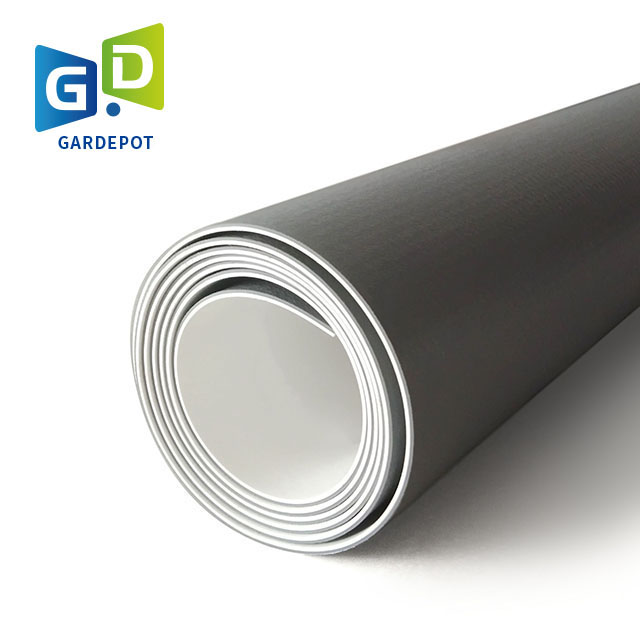
Technical Parameters and Material Science: PVC, EPDM, and TPO
Understanding the core technical specifications is crucial when comparing roofing membranes. Each material – PVC, EPDM, and TPO – possesses distinct properties that make it suitable for different applications. We will compare them, focusing on aspects critical to long-term performance and the overall cost of rubber roofing membrane evaluation.
Our Product: PVC Membrane (Gardepota.com)
Our PVC Membrane is a high-performance thermoplastic roofing solution, engineered for superior durability and weather resistance. Unlike thermoset EPDM, PVC membranes are heat-weldable, creating monolithic seams that are stronger than the material itself, virtually eliminating common leak points.
- Material: Polyvinyl Chloride (PVC), reinforced with a high-strength polyester scrim for dimensional stability.
- Typical Thickness: 1.2 mm (45 mil), 1.5 mm (60 mil), 1.8 mm (72 mil). Our standard offerings generally range from 1.2mm to 2.0mm, with 1.5mm being a popular choice for commercial applications due to its excellent balance of flexibility and puncture resistance.
- Lifespan: Independently tested to last 20+ years, with many installations exceeding 30 years.
- Key Advantages:
- Superior Seam Strength: Hot-air welded seams provide an impenetrable barrier against water.
- Chemical Resistance: Excellent resistance to oils, greases, and many industrial chemicals, making it ideal for restaurant roofs or industrial facilities where such exposures are common.
- Fire Resistance: Often self-extinguishing and meets stringent fire ratings (e.g., UL Class A).
- UV Resistance: Formulated with UV stabilizers to resist degradation from sunlight.
- Puncture Resistance: Reinforced scrim provides enhanced resistance to foot traffic and debris.
- Energy Efficiency: Available in light colors (e.g., white, light grey) that reflect solar radiation, reducing cooling loads on buildings.
Comparative Analysis: PVC vs. EPDM vs. TPO
Here's a detailed comparison highlighting key differences and how they influence the overall cost of rubber roofing membrane vs. other solutions:
| Feature | PVC Membrane | EPDM (Rubber) Membrane | TPO Membrane |
|---|---|---|---|
| Material Type | Thermoplastic (Polyvinyl Chloride) | Thermoset (Ethylene Propylene Diene Monomer) | Thermoplastic Polyolefin |
| Seam Technology | Hot-air welded (fusion) | Adhesive/tape (chemical bonding) | Hot-air welded (fusion) |
| Chemical Resistance | Excellent (oils, fats, some acids) | Good (limited to hydrocarbons) | Good (some oils/greases) |
| Puncture Resistance | Very Good (reinforced scrim) | Good | Good to Very Good (depending on formulation) |
| Flexibility (Cold) | Good | Excellent | Good |
| UV Resistance | Excellent (formulated) | Excellent (carbon black) | Good (prone to chalking over time) |
| Typical Lifespan | 20-30+ years | 20-30+ years | 15-25 years |
| Recyclability | Fully recyclable (post-consumer) | Difficult to recycle | Potentially recyclable |
| Color Options | Wide range (white, grey, tan, etc.) | Typically black (white available, higher cost) | White, grey, tan |
| Installation Complexity | Moderate (welding requires skill) | Moderate (large sheets, adhesive application) | Moderate (welding requires skill) |
| Initial Material Cost (Relative) | Moderate to High | Low to Moderate | Moderate |
| Total Installed Cost (Relative) | Competitive, due to longevity & energy savings | Lower initial, potentially higher maintenance for seams | Competitive |
This comparison shows that while the initial cost of rubber roofing membrane (EPDM) might seem lower, the long-term benefits of PVC, particularly its superior seam integrity and chemical resistance, often translate to a lower total cost of ownership and reduced maintenance, which is a crucial factor for building professionals. Our PVC membranes are manufactured to strict ASTM standards for roofing membranes, ensuring consistent quality and performance.
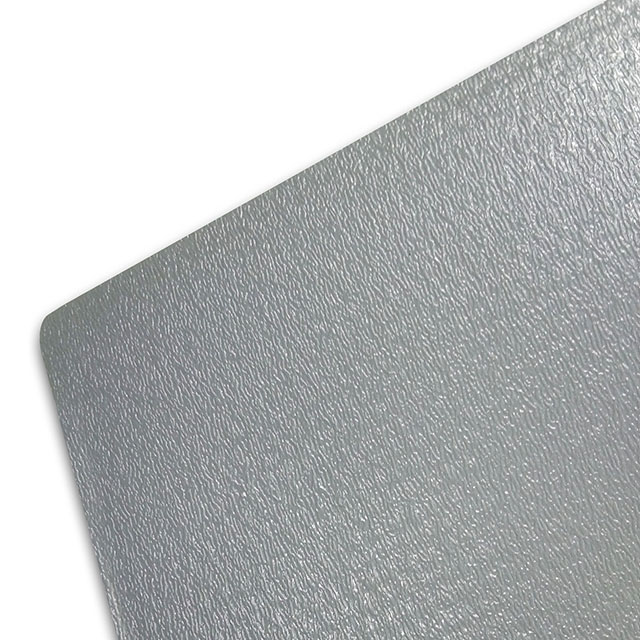
Manufacturing Process of Flexible Roofing Membranes (Illustrated with PVC)
The quality and performance of a roofing membrane are intrinsically linked to its manufacturing process. While EPDM and TPO have their own production methods, the general principles of creating a robust, flexible sheet are similar. Here, we detail the typical process for our high-quality PVC membranes, illustrating the precision and quality control involved, which directly impacts the product's lifespan and the overall cost of rubber roofing membrane comparison.
Note: While this section focuses on PVC membrane manufacturing, the underlying principles of material blending, extrusion/calendering, and quality control are fundamental to producing any high-performance roofing membrane, including EPDM (Ethylene Propylene Diene Monomer) and TPO (Thermoplastic Polyolefin). The differences lie primarily in the raw material composition and specific processing temperatures.
PVC Membrane Manufacturing Process: From Raw Material to Finished Product
Raw Material Blending
High-quality PVC resin (Polyvinyl Chloride polymer) is precisely mixed with various additives, including plasticizers (for flexibility), UV stabilizers (to prevent degradation from sunlight), fire retardants, biocides, and pigments. This critical step ensures the membrane's specific performance characteristics, such as flexibility, weather resistance, and color stability. The blend ratio is carefully controlled to meet industry standards like ASTM D4434.
Extrusion/Calendering
The blended material is fed into a large industrial calendering machine. Here, the mixture is heated to a molten state and then passed through a series of heated rollers. These rollers progressively flatten and stretch the material into a uniform sheet of the desired PVC membrane thickness (e.g., 1.2mm, 1.5mm, 1.8mm). This process ensures consistent gauge and a smooth surface finish. For reinforced membranes, a high-strength polyester scrim is integrated between layers during this stage, enhancing tear and puncture resistance.
Cooling and Curing
After calendering, the hot membrane sheet is carefully cooled, typically over cooling rollers, to stabilize its dimensions and physical properties. This controlled cooling process prevents warping and ensures the membrane retains its structural integrity and flexibility for optimal performance during installing rubber roof membrane (or PVC membrane) applications.
Quality Control and Testing
Throughout and after the manufacturing process, rigorous quality control checks are performed. This includes:
- Thickness Gauging: Continuous monitoring of membrane thickness.
- Tensile Strength Testing: Ensuring the material can withstand significant pulling forces.
- Tear Resistance Testing: Verifying resistance to tearing from punctures or stress.
- Seam Strength Testing: For membranes designed for welding, test welds are performed and tested for peel and shear strength.
- Dimensional Stability: Checking for shrinkage or expansion under temperature changes.
- UV Accelerated Weathering: Simulating long-term exposure to sunlight and weather to predict lifespan.
Rolling and Packaging
Once approved, the finished membrane is precisely cut to standard widths and lengths, then rolled onto sturdy cores. Each roll is carefully packaged and labeled, ready for shipment to project sites worldwide. Proper packaging protects the membrane during transit and storage, ensuring it arrives in optimal condition for installing rubber roof membrane (or PVC) effectively.
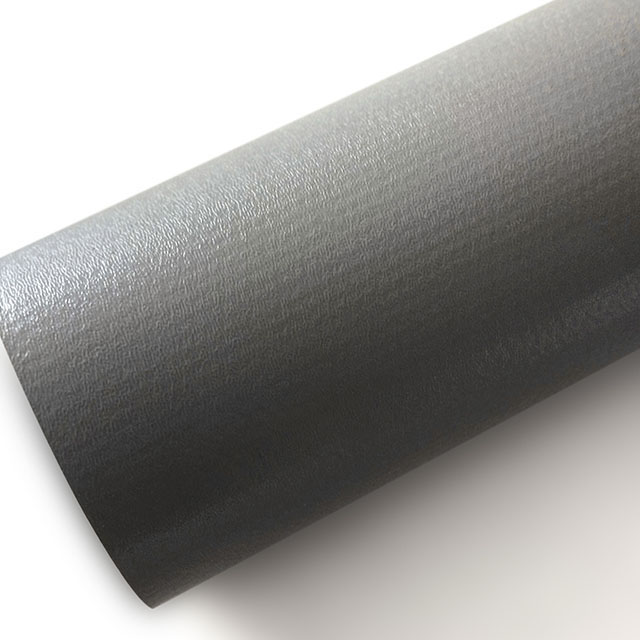
Application Scenarios and Technical Advantages
Our PVC membranes excel in a variety of challenging roofing environments, demonstrating clear advantages over traditional roofing materials and even other single-ply options. These advantages significantly contribute to a favorable overall project cost, often outperforming the initial cost of rubber roofing membrane when considering total lifecycle expenses.
Typical Application Scenarios:
- Commercial and Industrial Buildings: Ideal for large flat or low-slope roofs of warehouses, factories, and retail centers due to ease of installation for large areas and excellent durability.
- Restaurant and Food Processing Facilities: Its superior resistance to animal fats, oils, and greases makes it perfectly suited for roofs exposed to kitchen exhaust.
- Chemical Plants and Laboratories: PVC's high chemical resistance protects the roof from various airborne chemical exposures.
- Green Roofs and Solar Panel Installations: Compatible with various overburden systems, including vegetated roofs and photovoltaic arrays, due to its root resistance and durability.
- High-Wind Zones: Can be mechanically fastened or fully adhered to withstand significant wind uplift pressures, crucial for hurricane-prone regions.
- Water Containment: Beyond roofing, our membranes are also used in various waterproofing applications such as pond liners and tunnel waterproofing due to their exceptional watertight properties.
In these scenarios, the long-term benefits of our PVC Membrane, such as reduced maintenance and enhanced longevity, far outweigh the initial cost of rubber roofing membrane alternatives.
Technical Advantages in Application:
Our PVC Membrane offers distinct advantages:
- Exceptional Watertightness: Hot-air welded seams create a molecular bond, making the roof a single, impenetrable membrane. This is a significant advantage over glued or taped seams common with some cost of rubber roofing membrane (EPDM) installations, which can degrade over time.
- Energy Efficiency: White PVC membranes reflect up to 80% of the sun's rays, significantly reducing heat absorption and lowering air conditioning costs. This "cool roof" effect contributes to LEED points and reduces urban heat island effect, offering substantial long-term savings.
- Fire Safety: PVC is inherently fire-resistant due to its chlorine content and self-extinguishes, achieving high fire ratings (e.g., UL Class A for external fire exposure).
- Longevity and Durability: Reinforced with a polyester scrim, our PVC membranes resist punctures, tears, and impacts, ensuring a long service life even under heavy foot traffic or harsh weather. The lifespan often exceeds 25-30 years in various climates.
- Low Maintenance: The smooth surface and chemical resistance make it easy to clean and resist mildew and algae growth, leading to lower maintenance costs over its lifespan.
These tangible benefits contribute to a lower total cost of ownership, making our PVC Membrane a more economically viable choice compared to just focusing on the initial cost of rubber roofing membrane.
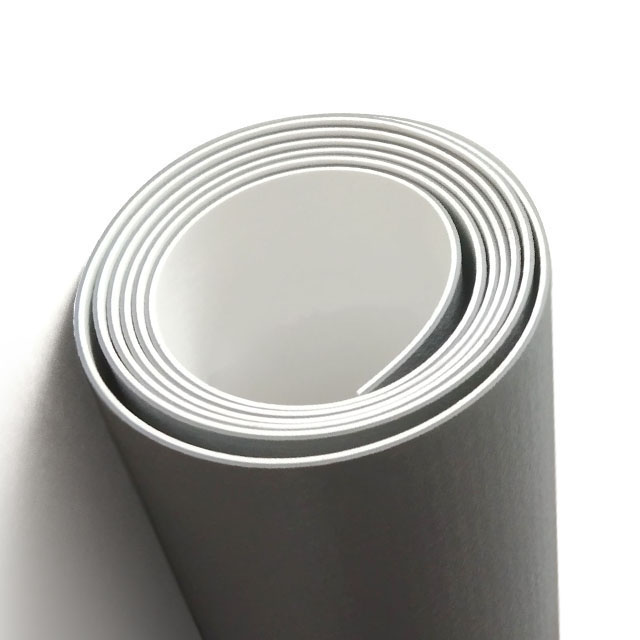
Manufacturer Comparison and Gardepota's Edge
When selecting a roofing membrane supplier, it's not just about the cost of rubber roofing membrane or PVC. It's about reliability, quality assurance, technical support, and the ability to deliver comprehensive solutions. Gardepota stands out in the industry through its commitment to innovation, stringent quality control, and unparalleled customer service.
Why Choose Gardepota PVC Membrane?
- Expertise & Experience: With over 15 years in the waterproofing and roofing industry, Gardepota has extensive experience manufacturing and supplying high-performance membranes worldwide. Our team comprises material scientists, engineers, and roofing specialists who deeply understand the nuances of membrane technology.
- Authoritativeness & Certifications:
- ISO 9001:2015 Certified: Demonstrates our commitment to consistent quality management systems.
- ASTM Compliance: Our PVC membranes meet or exceed relevant ASTM standards (e.g., ASTM D4434 for PVC), ensuring performance and compatibility.
- CE Marking: Compliance with European health, safety, and environmental protection standards.
- UL Listed: Many of our products carry UL ratings for fire resistance, providing additional peace of mind.
- Advanced Manufacturing: We utilize state-of-the-art calendering and extrusion equipment, allowing for precise control over membrane thickness, reinforcement integration, and surface finish. This advanced manufacturing capability ensures superior product quality that directly impacts long-term performance.
- Tailored Solutions: We don't just sell membranes; we provide comprehensive solutions. From initial consultation to post-installation support, our team works closely with clients to understand project-specific needs and recommend the most suitable membrane system.
- Global Reach & Local Support: While we serve a global clientele, we also offer localized support through our network of distributors and technical representatives, ensuring prompt assistance wherever your project is located.
- Sustainability Commitment: Our PVC membranes are recyclable at the end of their long service life, contributing to a circular economy and reducing landfill waste. We are continuously working on reducing our environmental footprint throughout the production process.
Beyond the Price Tag: Total Value Proposition
When comparing the cost of rubber roofing membrane with our PVC solutions, consider the total value:
- Reduced Labor Costs: Our membrane's ease of welding and large sheet sizes can lead to faster installation times.
- Lower Maintenance: Superior seam integrity and chemical resistance mean fewer costly repairs over the roof's lifespan.
- Energy Savings: White PVC significantly reduces cooling costs, providing ongoing operational savings that quickly offset initial material investments.
- Long-Term Warranty: Our robust product comes with comprehensive warranties, underscoring our confidence in its durability and reducing your long-term risk.
Custom Solutions and Application Cases
Gardepota prides itself on offering not just standard products but also customized solutions to meet unique project specifications. Our experience spans a wide array of demanding applications, demonstrating the versatility and reliability of our PVC Membrane, often providing a more effective long-term solution than focusing solely on the cost of rubber roofing membrane.
Tailored Solutions
We understand that every roofing project has unique challenges. Gardepota offers customization in several areas:
- Custom Thicknesses and Widths: While standard thicknesses like 1.2mm, 1.5mm, and 1.8mm are common, we can produce specific gauges and roll widths to optimize material usage and reduce seams for large or unusually shaped roofs.
- Specialized Formulations: For projects requiring enhanced resistance to specific chemicals, extreme temperatures, or UV exposure, we can modify our PVC blend to meet these rigorous demands.
- Pre-fabrication Services: For complex details or large panel sections, we can pre-fabricate membrane sections in our factory, reducing on-site labor and ensuring consistent seam quality, which is particularly beneficial when comparing to the complexity of installing rubber roof membrane on intricate designs.
- Color Matching: While white and grey are standard for energy efficiency, we can offer custom color options for architectural aesthetics where required.
Application Cases and Client Feedback
Our membranes have been successfully installed on diverse projects globally, proving their resilience and performance. Here are some examples:
Case Study 1: Large Distribution Center, USA
Challenge: A 500,000 sq ft distribution center required a durable, energy-efficient roofing solution that could be installed quickly to minimize disruption to operations. The client was initially evaluating the cost of rubber roofing membrane, but was concerned about long-term maintenance of adhesive seams.
Solution: Gardepota supplied 1.5mm white PVC Membrane. Its large roll sizes and heat-weldable seams allowed for rapid installation. The white surface dramatically reduced the building's cooling load. The project was completed two weeks ahead of schedule.
Client Feedback: "The Gardepota PVC membrane not only met our aggressive timeline but also exceeded our expectations for energy performance. The ease of installation, especially compared to prior experience with installing rubber roof membrane, was a huge benefit, and the energy savings have been substantial."
Case Study 2: Coastal Hotel Renovation, Australia
Challenge: A beachfront hotel needed a roof that could withstand harsh coastal conditions, including high UV exposure, salt spray, and strong winds, while providing an aesthetically pleasing look.
Solution: Custom-formulated 1.8mm Gardepota PVC Membrane with enhanced UV and wind uplift resistance was chosen. Its flexibility allowed for complex architectural details, and its superior seam strength ensured watertightness against sea spray.
Client Feedback: "We required a roofing material that could stand up to the unforgiving coastal environment. Gardepota's PVC delivered exceptional durability and maintains its appearance beautifully. We believe this was a much better investment than any cost of rubber roofing membrane solution given the conditions."
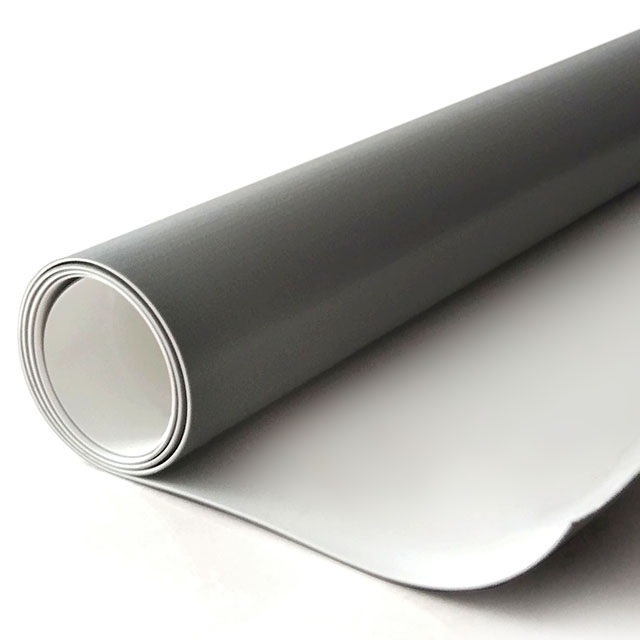
Data Visualization: Cost of Rubber Roofing Membrane (EPDM) vs. Other Membranes - Key Parameters
Understanding the parameters influencing the cost of rubber roofing membrane and its alternatives is crucial for informed decision-making. Below is a table summarizing typical parameters for common single-ply roofing membranes. Please note that exact costs can vary significantly based on region, manufacturer, project size, and market fluctuations. The figures presented here are representative averages.
Typical Roofing Membrane Parameters and Relative Costs (2023/2024 Estimates)
| Parameter | EPDM (Rubber) Membrane | PVC Membrane (Gardepota) | TPO Membrane |
|---|---|---|---|
| Typical Thickness | 45-90 mil (1.1-2.3 mm) | 45-80 mil (1.2-2.0 mm) | 45-80 mil (1.1-2.0 mm) |
| Material Cost Per Sq. Ft. (USD) | $0.70 - $1.20 | $0.80 - $1.40 | $0.75 - $1.30 |
| Installed Cost Per Sq. Ft. (USD) (Materials + Labor) | $5.00 - $10.00 | $5.50 - $11.00 | $5.20 - $10.50 |
| Average Lifespan (Years) | 20-30 | 25-35+ | 15-25 |
| Maintenance Frequency | Moderate (seam checks) | Low (minimal seam issues) | Moderate (some surface chalking) |
| Energy Reflectivity (White) | Lower (black typically, white available at higher cost) | High (up to 80%) | High (up to 78%) |
| Chemical Resistance | Limited (poor with oils/fats) | Excellent | Good |
| Seam Integrity | Adhesive/tape (can degrade) | Superior (heat-welded) | Excellent (heat-welded) |
This table clearly illustrates that while the raw material cost of rubber roofing membrane might appear slightly lower initially, the total installed cost and long-term benefits of PVC, such as extended lifespan, superior seam integrity, and energy savings, present a compelling argument for its overall value. These factors are critical for calculating the true Return on Investment (ROI) of a roofing system.
For more specific pricing on our PVC Membrane or to discuss your project needs, please contact us directly. We provide transparent and competitive quotations.
Trustworthiness: Delivery, Warranty, and Support
At Gardepota, trustworthiness is paramount. We believe in providing complete transparency and support throughout the entire project lifecycle, from initial inquiry to post-installation. This commitment enhances user confidence and ensures a seamless experience, especially important when considering significant investments like roofing membranes, irrespective of the cost of rubber roofing membrane or PVC.
Delivery and Logistics
- Global Shipping: We have established reliable logistics networks to ensure timely delivery of our PVC Membrane products to any location worldwide.
- Efficient Order Processing: Our streamlined order processing system ensures that your order is handled promptly and accurately from confirmation to dispatch.
- Typical Lead Time: For standard products, our typical lead time is 2-4 weeks from order confirmation, depending on volume and customization. Expedited shipping options are available upon request.
- Packaging: Products are meticulously packaged to prevent damage during transit, ensuring they arrive on-site in perfect condition, ready for installing rubber roof membrane (or PVC).
Comprehensive Warranty and Quality Assurance
We stand by the quality of our PVC Membrane with robust warranty programs. Our standard product warranty covers material defects for a period of 15 to 25 years, depending on the membrane thickness and project specifications. Extended warranty options are also available.
- Manufacturing Standards: All our products adhere strictly to international manufacturing standards (e.g., ISO, ASTM), ensuring consistent quality and performance.
- Batch Traceability: Every roll of membrane is traceable back to its manufacturing batch, allowing for full transparency and quality control.
- Performance Guarantee: Our membranes are designed to withstand harsh environmental conditions and maintain their performance properties for decades, minimizing the need for costly repairs and offering long-term value that often surpasses the initial cost of rubber roofing membrane.
Dedicated Customer Support and Technical Assistance
Our commitment doesn't end with delivery. We provide comprehensive support:
- Pre-sales Consultation: Our technical sales team offers expert advice on material selection, system design, and project planning.
- Technical Documentation: Access to detailed technical data sheets, installation guides, and CAD details for seamless project execution.
- On-site Support: For large or complex projects, on-site technical assistance can be arranged to ensure proper installation techniques and address any challenges.
- After-sales Service: Our dedicated customer service team is available to assist with any post-installation queries, warranty claims, or product performance concerns.
- Training Programs: We offer training sessions for installers on best practices for welding and installing rubber roof membrane (or PVC membrane) systems, ensuring high-quality applications.

Professional FAQ on Roofing Membranes
Q1: What is the primary difference between PVC, EPDM, and TPO roofing membranes?
A: The primary difference lies in their chemical composition and seam technology. EPDM (Ethylene Propylene Diene Monomer) is a synthetic rubber (thermoset) that typically uses adhesive or tape for seams. Its elasticity is a key feature. PVC (Polyvinyl Chloride) and TPO (Thermoplastic Polyolefin) are both thermoplastics, meaning their seams are heat-welded (fused together) creating a monolithic, highly durable bond. PVC generally offers superior chemical resistance and flexibility, while TPO is often valued for its blend of EPDM's flexibility and PVC's weldability, though sometimes with lesser long-term UV stability than PVC. The installation method directly impacts the overall cost of rubber roofing membrane vs. thermoplastic options.
Q2: How does membrane thickness (e.g., epdm roof membrane thickness) affect its performance and cost?
A: Membrane thickness directly correlates with durability, puncture resistance, and lifespan. Thicker membranes (e.g., 60 mil or 80 mil compared to 45 mil) offer enhanced resistance to foot traffic, hail, and general wear and tear, leading to a longer service life. Naturally, thicker membranes have a higher material cost. However, the increased upfront cost of rubber roofing membrane or PVC for a thicker membrane is often justified by reduced maintenance and extended replacement cycles, resulting in a lower lifecycle cost.
Q3: What are the key inspection standards for roofing membranes like PVC or EPDM?
A: Key inspection standards include ASTM International standards specific to each material (e.g., ASTM D4434 for PVC, ASTM D4637 for EPDM, ASTM D6878 for TPO). These standards cover physical properties like tensile strength, tear resistance, puncture resistance, dimensional stability, and weathering resistance. Compliance with these standards, along with ISO 9001 for quality management, ensures product reliability and enhances trust in the manufacturer. Reputable manufacturers will openly provide compliance documentation.
Q4: Is installing rubber roof membrane or PVC membrane a DIY project?
A: While some small EPDM patch jobs might be DIY-friendly, installing a full rubber or PVC roof membrane is generally NOT recommended as a DIY project, especially for larger commercial or complex residential roofs. It requires specialized tools (like hot-air welders for PVC/TPO), extensive knowledge of proper substrate preparation, flashing details, and safety protocols. Improper installation can lead to costly leaks and premature roof failure, negating any initial savings on the cost of rubber roofing membrane itself. Professional installation ensures proper warranty coverage and long-term performance.
Q5: How does a white roofing membrane contribute to energy efficiency?
A: White roofing membranes, like our white PVC Membrane, are "cool roofs" because they reflect a significant portion of solar radiation rather than absorbing it. This reflectivity reduces the heat absorbed by the building, leading to lower internal temperatures and subsequently, reduced reliance on air conditioning. This directly translates to lower energy consumption and significant cost savings over the roof's lifespan, providing an economic benefit that offsets the material cost of rubber roofing membrane or PVC.
Q6: What is the typical lead time for ordering Gardepota PVC Membranes?
A: For standard orders of our PVC Membrane, the typical lead time is between 2 to 4 weeks from the confirmation of your order to dispatch. This timeframe can vary based on the order volume, specific customization requirements, and current production schedules. We always recommend contacting our sales team for precise lead times for your specific project, especially for large-scale or urgent requirements, to ensure timely delivery for your installing rubber roof membrane (or PVC) project.
Q7: Can PVC membranes be recycled at the end of their life?
A: Yes, a significant advantage of PVC membranes over thermoset options like EPDM is their recyclability. As a thermoplastic, PVC can be melted down and reprocessed into new products at the end of its long service life, contributing to a circular economy. This contrasts with EPDM, which is a thermoset rubber and generally very difficult to recycle. This recyclability is an important environmental factor when considering the long-term impact and overall value beyond just the initial cost of rubber roofing membrane.
Conclusion: Investing Beyond the Initial Cost of Rubber Roofing Membrane
Choosing the right roofing membrane is a critical decision that impacts a building's longevity, operational costs, and environmental footprint. While the initial cost of rubber roofing membrane (EPDM) might seem appealing at first glance, a thorough evaluation of total lifecycle costs, including installation complexity, maintenance, energy savings, and durability, often reveals that advanced thermoplastic membranes like our PVC Membrane offer superior long-term value. Our commitment to quality, innovation, and customer support ensures that you receive not just a product, but a comprehensive, reliable roofing solution designed for decades of performance.
For further information on roofing membrane advancements and industry best practices, we recommend consulting authoritative sources and academic research. The roofing industry is continuously evolving, and staying informed is key to making sustainable and cost-effective choices for building envelopes.
References and Further Reading:
National Roofing Contractors Association (NRCA): A leading authority on roofing industry standards and practices. Their publications often provide insights into material performance and installation techniques.
Journal of Building Engineering: Academic journal publishing research on various aspects of building materials and performance, including roofing membranes. Look for studies on long-term degradation and energy efficiency.
https://www.sciencedirect.com/journal/journal-of-building-engineering
Roofing Contractor Magazine: An industry publication offering articles on new technologies, case studies, and market trends in commercial and residential roofing.
U.S. Department of Energy - Cool Roofs: Provides scientific data and benefits of cool roof technologies, including highly reflective membranes like white PVC.
ASTM International: Provides consensus standards for materials, products, systems, and services. Relevant standards for roofing membranes include those for EPDM (D4637), PVC (D4434), and TPO (D6878).



